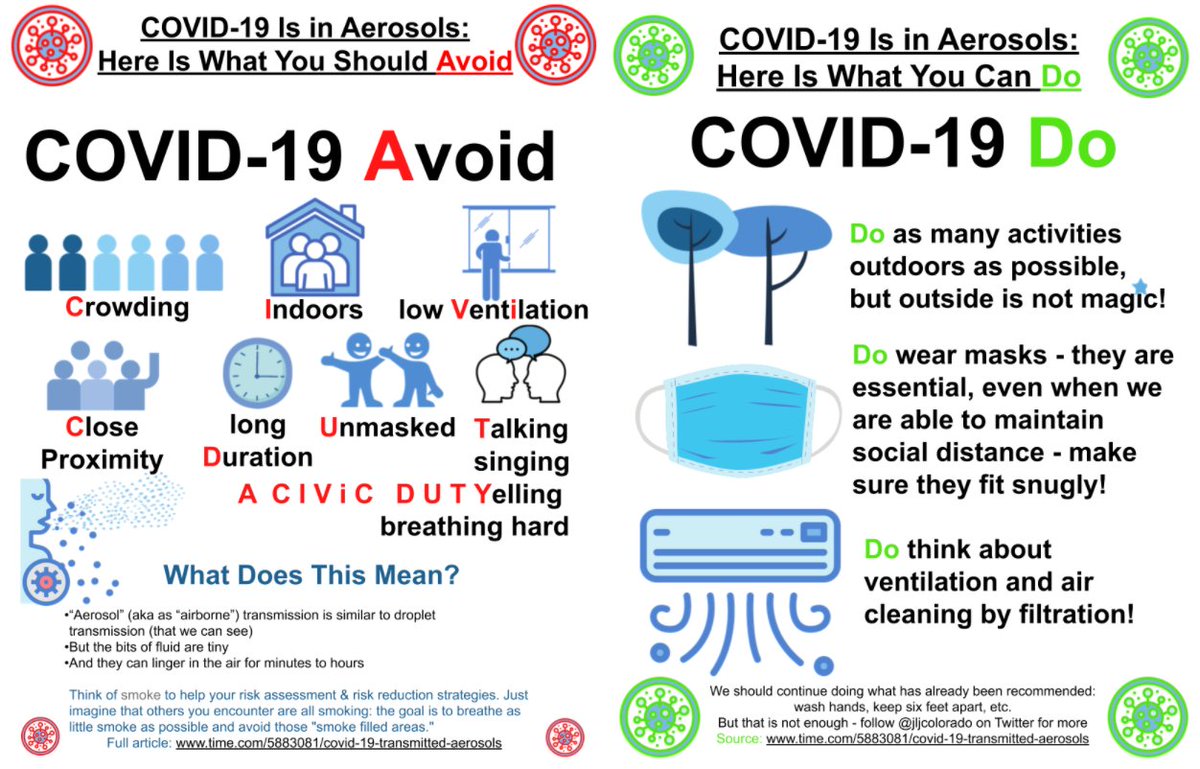
1/ Update to the FAQs on Protecting Yourself from COVID-19 Aerosol Transmission
tinyurl.com/faqs-aerosol
New section on CO2:
9. Monitoring ventilation using CO2 levels
9.1. Can we use the CO2 level in a space to estimate whether ventilation is good or bad?
tinyurl.com/faqs-aerosol
New section on CO2:
9. Monitoring ventilation using CO2 levels
9.1. Can we use the CO2 level in a space to estimate whether ventilation is good or bad?
2/ 9.2. Are there some complexities of the relationship between CO2 and infection risk
9.3. How can we use continuous CO2 measurements to determine the right amount of natural ventilation in an indoor space?
9.4. What type of CO2 analyzers can be trusted?
9.3. How can we use continuous CO2 measurements to determine the right amount of natural ventilation in an indoor space?
9.4. What type of CO2 analyzers can be trusted?
3/ 9.5. Do you recommend measuring and displaying CO2 in all public places?
As always feedback is appreciated (through this form: docs.google.com/forms/d/e/1FAI…).
We've been slow in updating but hope to give it a push in the coming weeks.
As always feedback is appreciated (through this form: docs.google.com/forms/d/e/1FAI…).
We've been slow in updating but hope to give it a push in the coming weeks.
• • •
Missing some Tweet in this thread? You can try to
force a refresh






